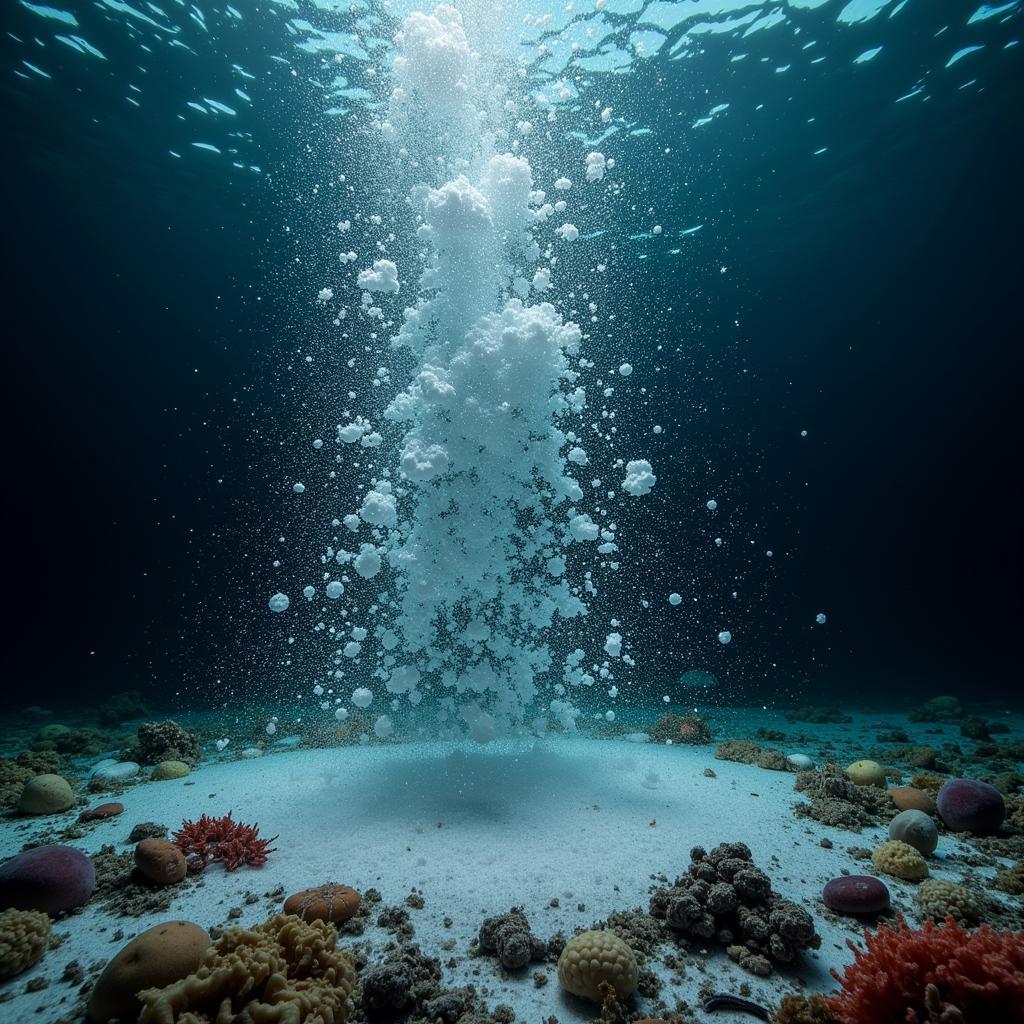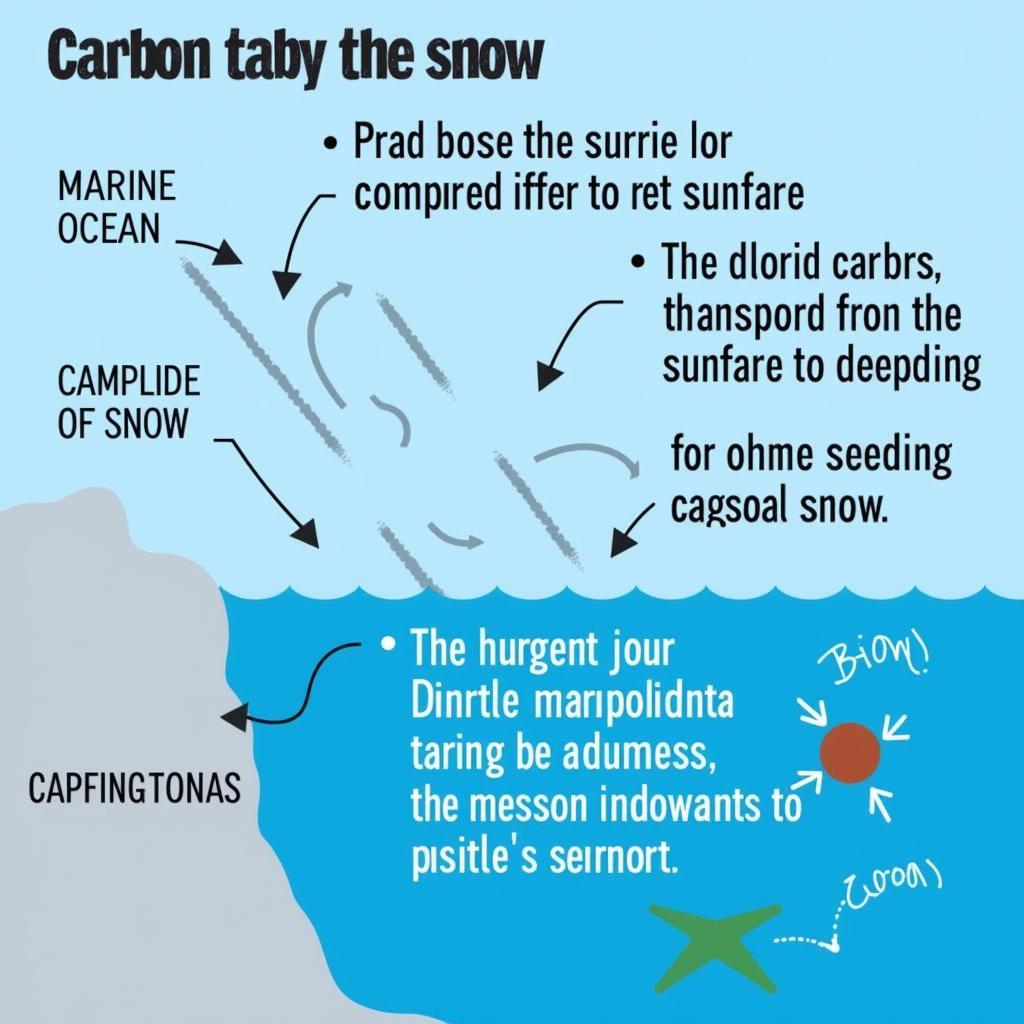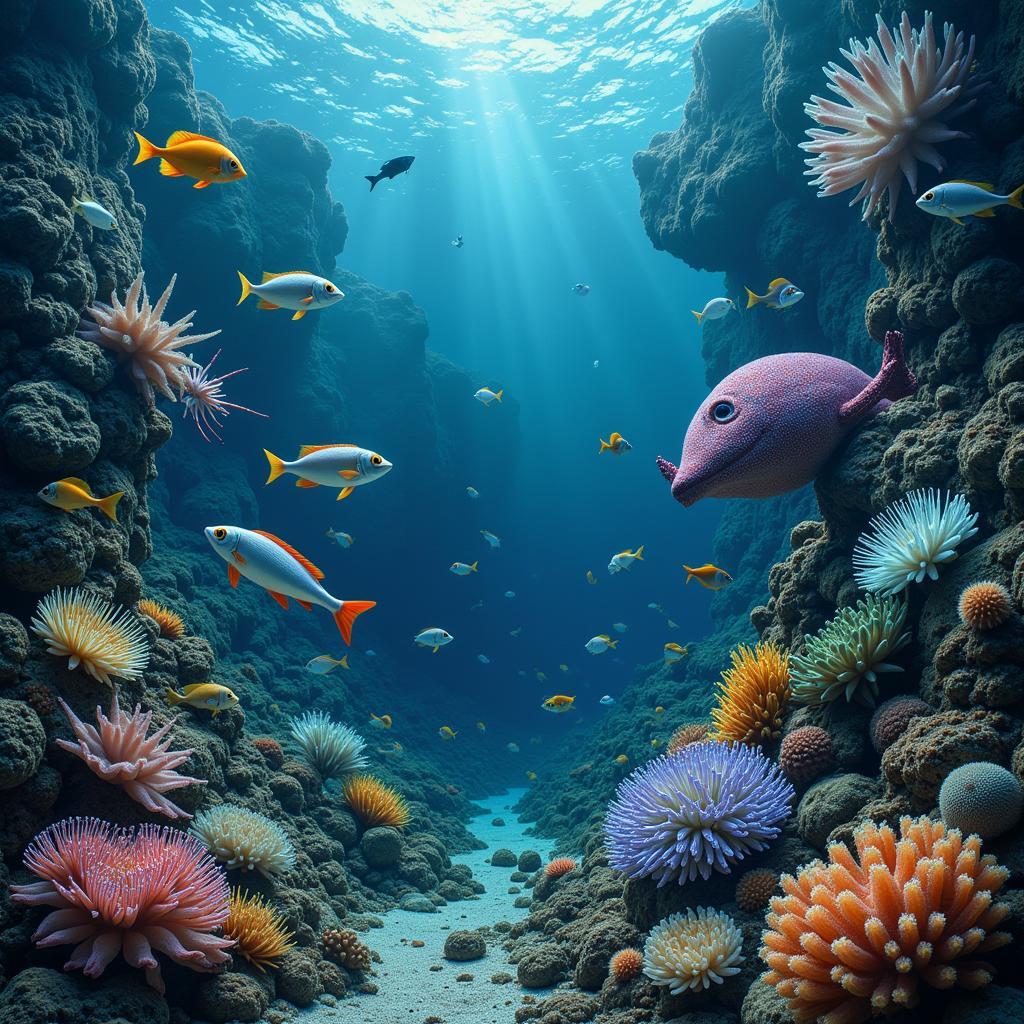Marine Snow Food, a constant shower of organic material descending from the sunlit surface waters to the deep ocean, plays a crucial role in the marine ecosystem. This fascinating phenomenon, named for its resemblance to falling snowflakes, isn’t actually snow at all but a complex mix of dead and decaying organisms, fecal matter, and other organic debris. It’s a vital food source for a vast array of deep-sea creatures, supporting life in the darkest depths of our oceans.
What is Marine Snow Food and Why is it Important?
Marine snow is composed of a diverse range of particles, including phytoplankton, zooplankton, bacteria, protists, and even bits of larger organisms like fish and whales. As these organisms die or release waste products, gravity pulls them downwards, creating a continuous rain of organic matter. This “snow” is crucial because it provides the primary food source for many deep-sea organisms, those living in areas where sunlight doesn’t penetrate and photosynthesis can’t occur. Without marine snow, these deep-sea ecosystems would likely collapse.
The descent of marine snow can be surprisingly slow, taking weeks or even months for particles to reach the ocean floor. During this journey, the snow undergoes various transformations, with bacteria and other microorganisms colonizing it and breaking down the organic matter. This decomposition process further enriches the marine snow, providing additional nutrients for the deep-sea inhabitants.
 Marine Snow Falling Through the Deep Ocean
Marine Snow Falling Through the Deep Ocean
The Role of Marine Snow in the Global Carbon Cycle
Marine snow also plays a significant role in the global carbon cycle. As organic matter sinks to the deep ocean, it carries carbon with it, effectively sequestering it from the atmosphere. This natural process helps regulate Earth’s climate by removing carbon dioxide from the atmosphere. The deep ocean acts as a massive carbon sink, thanks in large part to marine snow.
Understanding the dynamics of marine snow is essential for comprehending the complex interplay between biological and chemical processes in the ocean and their impact on the global climate. Scientists are actively studying the composition, distribution, and fate of marine snow to refine models of the carbon cycle and predict future climate change scenarios.
 Marine Snow and the Global Carbon Cycle
Marine Snow and the Global Carbon Cycle
The Diversity of Life Supported by Marine Snow Food
The deep ocean, despite its harsh conditions, teems with a surprising diversity of life, much of which is directly or indirectly dependent on marine snow. From tiny crustaceans and worms to larger fish and even giant squid, a wide array of organisms rely on this constant influx of organic matter for sustenance. Some creatures actively filter the snow from the water, while others scavenge on the seabed, consuming the debris that accumulates on the ocean floor.
The deep-sea environment presents unique challenges for organisms, and the adaptations they have evolved to capture and utilize marine snow are equally fascinating. Some creatures have developed specialized appendages for filtering the snow, while others have evolved bioluminescent lures to attract prey that feed on it.
What Happens to Marine Snow on the Ocean Floor?
Much of the marine snow that reaches the ocean floor forms a layer of organic-rich sediment. This sediment provides a habitat for a variety of benthic organisms, including bacteria, worms, and crustaceans, which play a crucial role in nutrient cycling and decomposition processes. The deep-sea floor is a dynamic environment, with the constant influx of marine snow driving complex ecological interactions.
Not all marine snow reaches the bottom, however. A significant portion is consumed by organisms in the midwater zone during its descent. This process, known as the biological pump, significantly reduces the amount of carbon that ultimately reaches the deep ocean floor.
 Marine Snow and Deep-Sea Ecosystem
Marine Snow and Deep-Sea Ecosystem
Conclusion
Marine snow food, an often-overlooked phenomenon, is essential for the health and functioning of the deep ocean ecosystem. Its role in the global carbon cycle further underscores its importance for the planet’s climate. By understanding the intricate dynamics of marine snow, we can gain a deeper appreciation for the interconnectedness of life on Earth and the vital role the ocean plays in sustaining it.
FAQ
- What is marine snow made of? Marine snow is made up of dead organisms, fecal matter, and other organic debris.
- Why is marine snow important? It is the primary food source for many deep-sea organisms and plays a key role in the global carbon cycle.
- How does marine snow contribute to the carbon cycle? It transports carbon from the surface to the deep ocean, effectively sequestering it.
- What organisms rely on marine snow? A wide range of deep-sea organisms, from tiny crustaceans to giant squid, rely on marine snow.
- What happens to marine snow on the ocean floor? It forms a layer of organic-rich sediment that supports benthic organisms.
- How fast does marine snow fall? It can take weeks or even months for marine snow to reach the ocean floor.
- Is all marine snow the same? No, the composition of marine snow can vary depending on the location and the organisms living in the surface waters.
For any further assistance, please contact us at Phone Number: 02437655121, Email: [email protected] or visit us at 3PGH+8R9, ĐT70A, thôn Trung, Bắc Từ Liêm, Hà Nội, Việt Nam. We have a 24/7 customer service team.